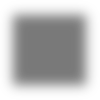作者: 林诗晖医生等
发表于1997年世界针灸学会朕合会成立十周年学术大会论文摘要汇编
在中国千百年来,针灸被用于治疗各种类型的癫痫. 但在中西医文献中缺乏针灸对治疗抗癫痫药难治的癫痫病人效果的报导, 本研究对于针灸作为治疗这类癫痫病人的辅助疗法的安全性和疗效进行了评估. 其治疗原则为: 理脾胃, 化痰浊, 平肝风, 宁心神, 通调阴阳. 据此取体穴: 百会,上脘,内关,足三里,丰隆,三阴交,申脉,照海,太冲; 以及耳穴:神门,心,脑干. 共有21个病人参加了研劣究,其中男13人,女8人; 年龄15-59(平均32岁) 病程5-40(平均18年). 他们接受4个疗程(每个疗治10次治疗)为期4个月的治疗. 所有的病人采用相同的针刺技术和相同的体穴及耳穴, 针刺期间抗癫痫药物的种类和剂量保持不变.
除1人由于不方便参加治疗而在治疗3个月后中途退出以外, 20个病人(95.2%)完成治疗.与针灸冶疗前3个月比较, 针灸治疗期间有15个病儿(71.4%)癫痫犮作情况有改善. 其中1个病人(4.7%)停止癲痫发作; 6个病人(28.6%)平均每月癞痫发作次数减少50%, 另外5个病人(24.8%)发作次数没有改变, 而癞痫药的剂量也没增加. 13个病人(61.9%)平均每月癞痫发作天数以及16个病儿(76.2%)发作间歇期变长. 在停针后3个月随访. 与针灸治疗期间相比较, 仍有12个病义(57.1%)癫痫发作频度继续減少. 针灸冶疗顺利无不良反应或其它意外情况出现.
综上所述, 针灸作为一种辅助疗法对冶疗继发性癞痫病人是安全的. 对大约3/4难治的继发性癞痫病人是有益的. 我们还需要进一步研究对这类病人进行针灸治疗的最佳穴组合以及针灸治疗的最佳次数和疗程长短等.
注: 林诗晖医生, 现任新加坡中央医院神经科高级顾问及新加坡卫生部
针灸研究委员 他也是本会属下新加坡针灸施沴中心的发起人之一,
曾担任该中心秘书长的职务. 林医生曾参加本会的针灸师专业培
训课程.于1997年参加本会主办的国际针灸师专业水平考试并获
得最优异的成绩.
Acupuncture Therapy for Patients with Focal Epilepsy Refractory to Anti-epileptic Drugs
By Dr. Lim Shih-Hui and others
This was an abstract of an article published in November 1997 on the Academic Conference of the 10th Anniversary of World Federation of Acupuncture-Moxibustion Societies.(WFAS)
According to the traditional Chinese medicine theory, epilepsy is caused by liver fire, phlegm heat, stagnant liver qi and/or accumulation of turbid phlegm. These give rise to disturbance of mental activities, loss of consciousness and convulsions. Long-standing epilepsy leads to yin deficiency of the liver and kidneys and yang deficiency of the spleen and kidneys. These deficiencies in turn worsen epilepsy.
For thousand years in China, acupuncture has been used to treat all types of epilepsy, during as well as in between seizures. Acupuncture is used to remove liver fire and phlegm heat and to dispel turbid phlegm by soothing liver qi. For acupuncture to be effective in long-standing epilepsy, it must include reinforcing yin and/or yang deficiencies as part of the overall treatment.
There is inadequate information in the Chinese and Western medical literature on the efficacy of acupuncture in patients refractory to anti epileptic drugs (AEDs). A study was conducted to assess the safety and beneficial effect of acupuncture as an adjuvant therapy in medically refractory focal epilepsy patients. Twenty one patients, 13 females and 8 males, with a mean age of 32 years (range: 19-59 years) and a mean duration of epilepsy of 18 years (range: 5 – 40 years), were recruited. They received 4 acupuncture treatment courses (10 treatment sessions per course) over a 4 month period. All patients received the same needling technique given by the same acupuncturist on the same body and auricular acupuncture points. The following were the body points chosen: Baihui(DU20) , Shangwan(RN13), Neiguan(PC6), Zusanli(ST36), Fenglong(ST40), Sanyinjiao(SP6), Shenmai(BL62), Zhaohai(K16),and Taichong(LR3). The following auricular points were used: Shenmen, Naogan and Xin. AED dosages for each patient remained unchanged.
Except one who dropped out after 3 months (inconvenient to attend acupuncture sessions), 20 patients (95.2%) completed treatment. Compared to the 3-month period before treatment, seizure control improved in 15 patients (71.4%) during acupuncture; 1 (4.7%) became seizure free, 6 (28.6%) had >50% reduction in average monthly seizure frequency and 8 (38%) had < 50% reduction. Seizures frequency remained unchanged or increased in 5 patients (24.8%) who did not need AED dosage increment. Thirteen patients (61.9%) had reduction inaverage number of seizure-day per month and 16 patients (76.2%) had longer seizure free interval. 3 months after stopping acupuncture, 12 patinets (57.1%) continued to have less frequent seizures compared to pre-acupuncture treatment period. All tolerated acupuncture well with no complication.
In conclusion, acupuncture was sage, and beneficial as an adjuvant therapy in about 3 quarter of medically refractory epilepsy patients. Further study will be conducted to determine the best combination of acupuncture points, and the optimal frequency and duration of acupuncture treatment for this group of epilepsy patients.
Note: Dr Lim Shih-Hui is presently a senior consultant of Department of Neurology, Singapore General Hospital and member of the Singapore Acupuncture Research Committee. Dr Lim is also one of the founders of our subsidiary charity organization “Acupuncture Charitable Centre (Singapore)” and he had held the official position of Secretary. Dr. Lim had attended our acupuncture intensive course and in 1997 he took part in the International Proficiency Examination for Professional Acupuncturist organized by the Association in Singapore. He passed the examination with excellent result.

